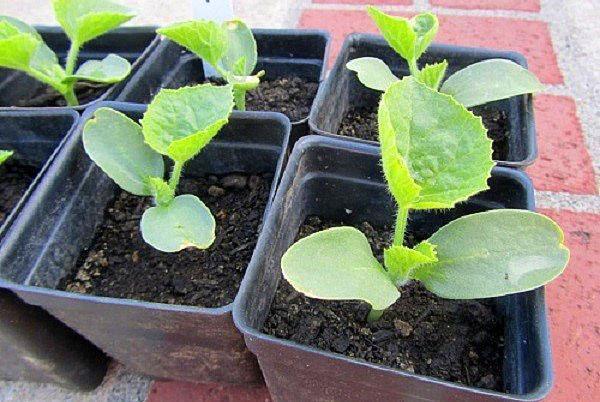Growing melon seedlings for open ground
 Not all gardeners have greenhouses available to grow early crops or, for example, melon seedlings. Of course, greenhouse conditions are the best suited for these purposes, however, you can get high-quality planting material at home, especially when it comes to small-scale cultivation. Such seedlings are practically no different from greenhouse ones, and the melons ripen in due time, allowing you to get an early harvest.
Not all gardeners have greenhouses available to grow early crops or, for example, melon seedlings. Of course, greenhouse conditions are the best suited for these purposes, however, you can get high-quality planting material at home, especially when it comes to small-scale cultivation. Such seedlings are practically no different from greenhouse ones, and the melons ripen in due time, allowing you to get an early harvest.
To grow strong healthy seedlings of melons, you need to pay attention to the following points:
- choose the right seeds;
- determine the timing of sowing;
- build mini-greenhouses from improvised means;
- sow the seeds and ensure proper maintenance of the crops right up to replanting.
Seed selection and sowing dates
For growing seedlings of melon with its further planting in open ground, it is better to choose early maturing varieties.
Melons such as Early Sweet, Skazka, July melons have good taste characteristics.
The sowing time for seedlings is indicated on the seed packet. For early varieties, this is usually the beginning of April. Thus, by the beginning of May, the matured seedlings will be ready for planting in the garden.
When growing seedlings of melons and gourds, you should choose a soil mixture for fruit plants.
What to make a mini-greenhouse for seedlings?
You can build a small greenhouse from any available means. The main thing in this moment is to provide the melon seedlings with a suitable microclimate, namely high humidity and a constant high air temperature.
For sowing seeds, it is convenient to use large-capacity cut plastic bottles or foam bowls with lids at least 5 cm high.
The subtleties of sowing melon seeds for seedlings
After the suitable containers are selected, and the seeds are purchased, you can start sowing:
- Pour well warm water to the bottom of the tray or other container about 1 cm of its height.
- Pour the substrate (directly into the water) and tamp it.
- Spill some boiling water over the soil.
- Spread the melon seeds over the surface of the compacted soil, leaving a distance of 2-3 cm between them.
- Cover the seeds with earth on top and tamp again slightly. It is not necessary to pour a lot of substrate, otherwise the seeds will sprout tightly.
- Cover the container with seeds with a lid and place in a warm place, for example, on a radiator.
In the created greenhouse conditions, the seeds will begin to hatch very quickly, and already on the 4th day the first shoots will be visible.